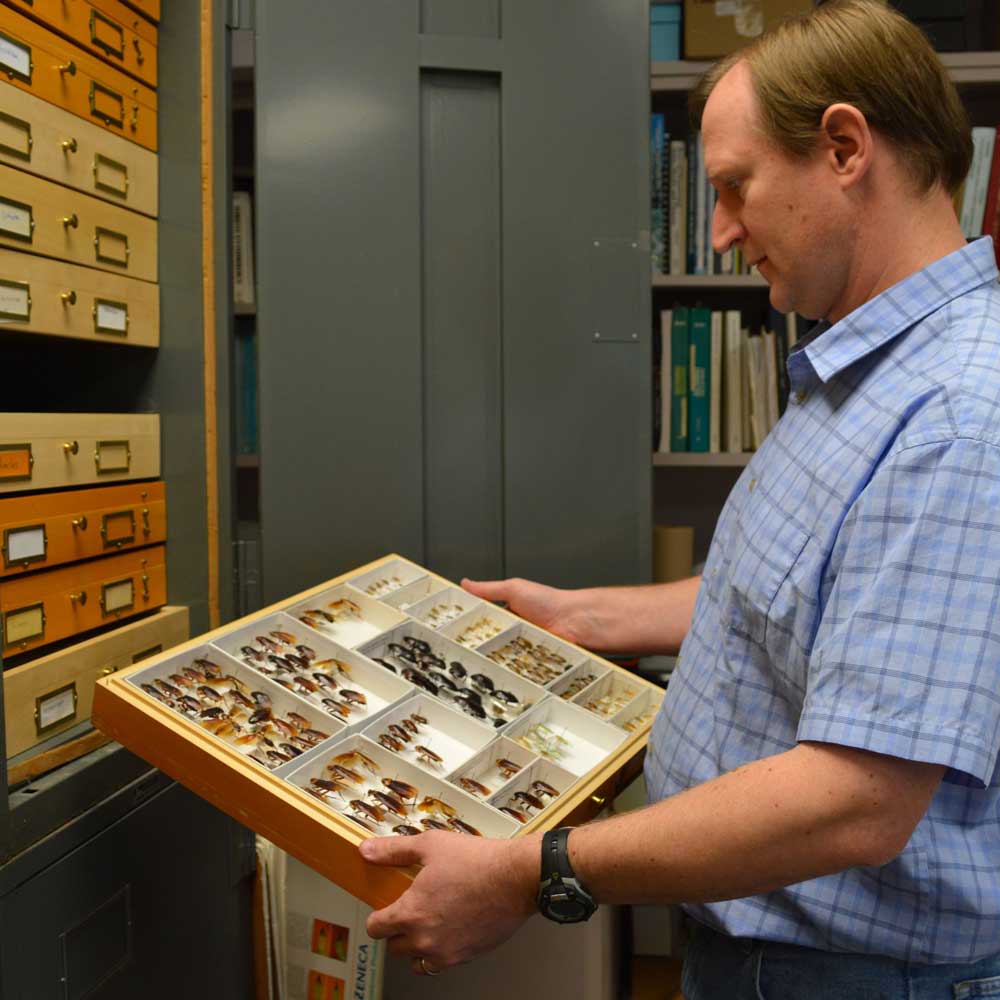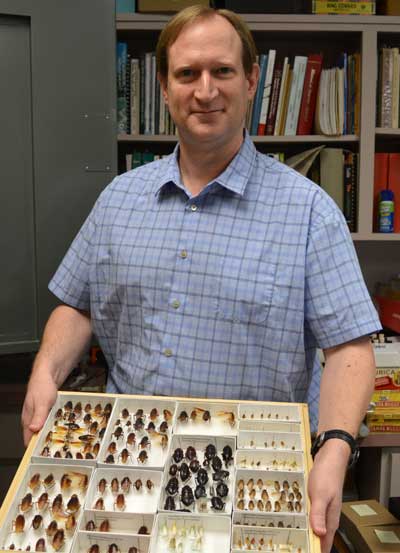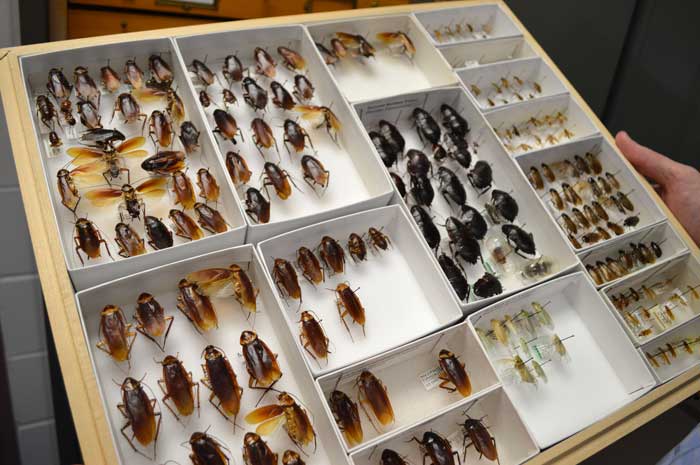Bugs are his job

Lyle Buss’ office is filled with bugs.
They’re in his drawers, under his desk and on his work space. But he isn’t worried. Buss, 46, is the manager of the Insect ID Lab at the University of Florida’s Steinmetz Hall, where he says he receives several insects per day from people around the state.
 Buss has worked at the office for 15 years. He works alone, at a desk covered in papers and pastel sticky notes showing his working progress of identifying samples. His job is to use his resources — taxonomy books, a microscope, other entomologists and his own experience — to identify the insects in his mail.
Buss has worked at the office for 15 years. He works alone, at a desk covered in papers and pastel sticky notes showing his working progress of identifying samples. His job is to use his resources — taxonomy books, a microscope, other entomologists and his own experience — to identify the insects in his mail.
He pulls out a large box from underneath a desk and grabs a cardboard tube. Some type of insect, dead or alive, sits inside, waiting to be identified. He usually receives samples from homeowners, pest-control professionals and people at county extension offices. Sometimes the insects are alive, smashed onto tape or in a photo sent to his email, he said. Most often, he’ll see ants, termites and spiders. But people usually know that much. They send him bugs to know if what they found on their driveway or in their backyard is harmful or beneficial. If the bugs cause damage, people need to know how to manage them. But people may spend money on pesticides to rid themselves of bugs that are actually helping them out. For example, there are about 220 kinds of ants in Florida. When Buss is sent a sample, he has to find out what type of ant it is to know what it feeds on and, if it’s causing harm, how to find the nest.
Although it’s an ID lab for insects, people have sent in snakes, snails and slugs, which he identifies using his connections to experts in those fields. To identify the species of bugs he receives, he looks at various body parts under the microscope at a high magnification. For some insects, however, his method of action is waiting it out. Sometimes, he’s sent larvae or caterpillars in the mail. Because he can’t yet tell what type of insect they are, he takes them home to try and rear them to the adult stage, he said.
 He opens drawers in his office to show insects pinned in a display box with an identification written in tiny black letters on a tag below them. He gestures to the many insects on display that he had raised. But he also likes to look closely at bugs from behind his camera. The other half of his job is to take photographs of insects for an online archive. If he walks past a tree to see a caterpillar feeding on it, he’ll photograph it along the way. He also takes photos of the insects he raises. His screensaver on one of his computer screens at his desk shows a diamondback moth on a leaf that had grown from a caterpillar under his care. Even before his job, he found collecting and rearing insects to be fun, he says.
He opens drawers in his office to show insects pinned in a display box with an identification written in tiny black letters on a tag below them. He gestures to the many insects on display that he had raised. But he also likes to look closely at bugs from behind his camera. The other half of his job is to take photographs of insects for an online archive. If he walks past a tree to see a caterpillar feeding on it, he’ll photograph it along the way. He also takes photos of the insects he raises. His screensaver on one of his computer screens at his desk shows a diamondback moth on a leaf that had grown from a caterpillar under his care. Even before his job, he found collecting and rearing insects to be fun, he says.
“It’s the kind of thing where my hobby is my job,” he says. “What more could I ask for?”